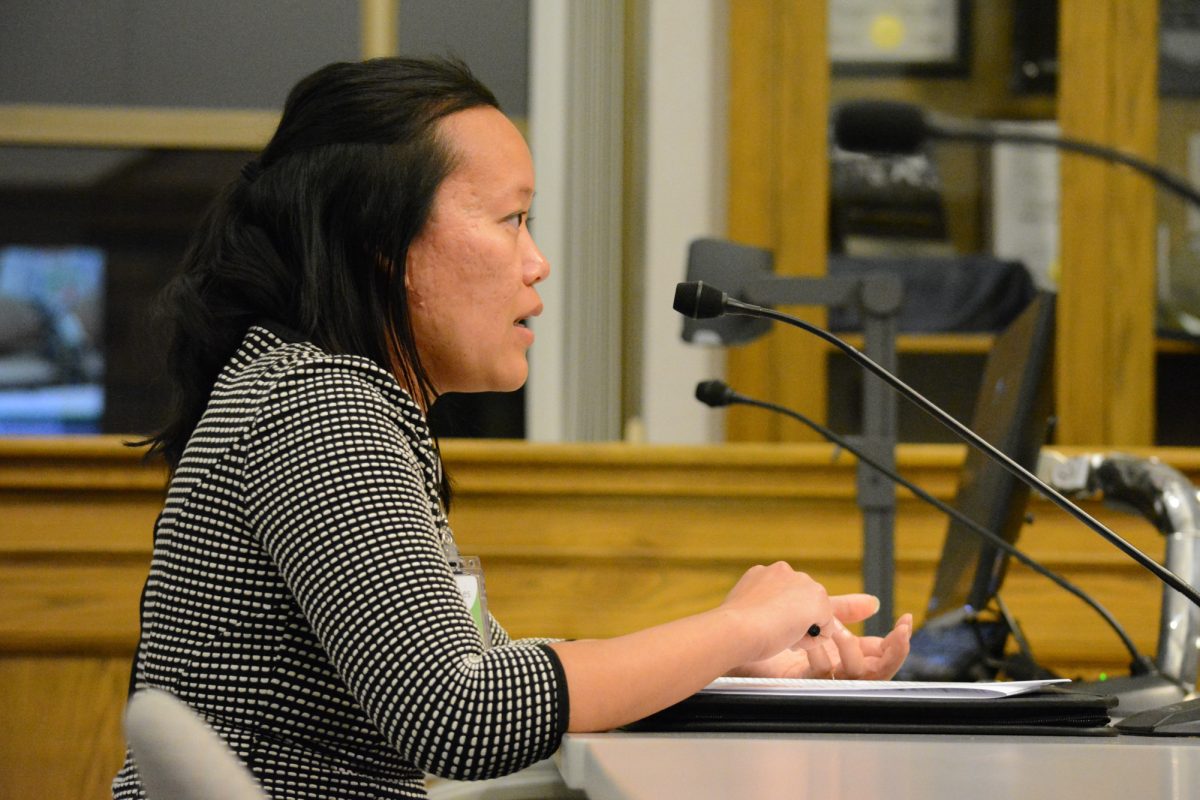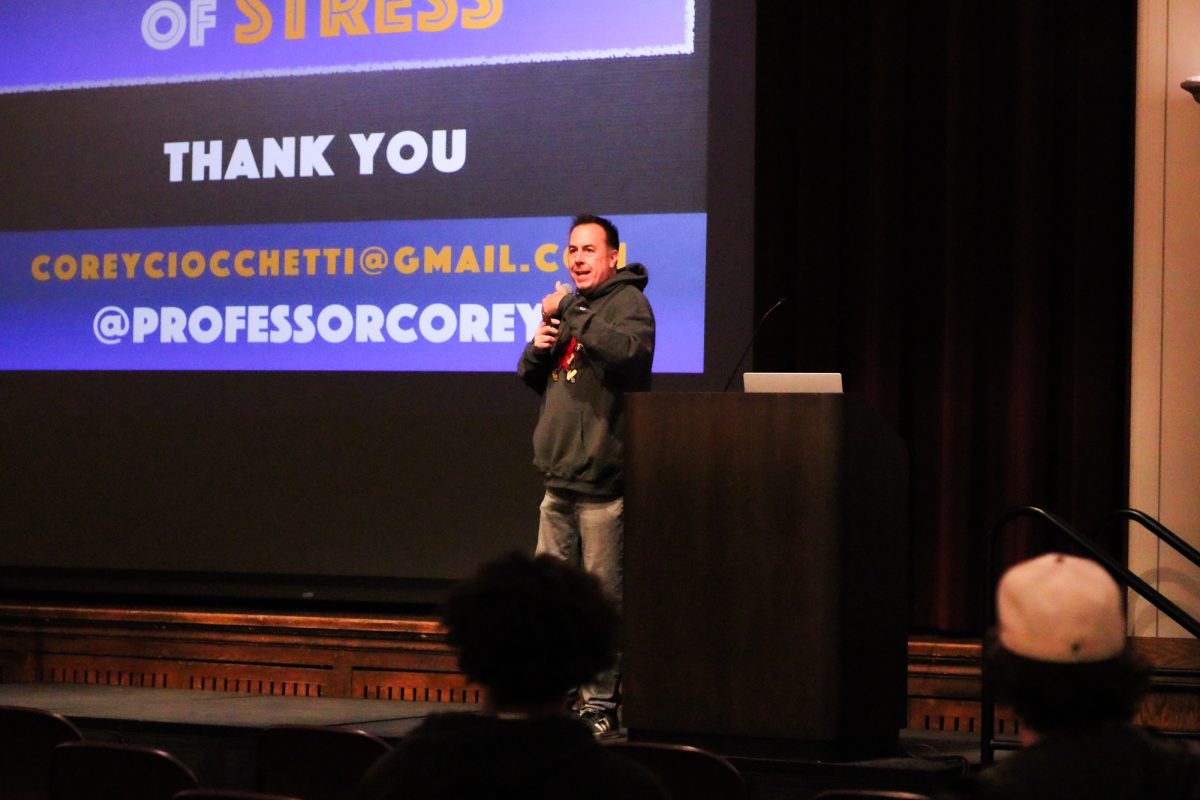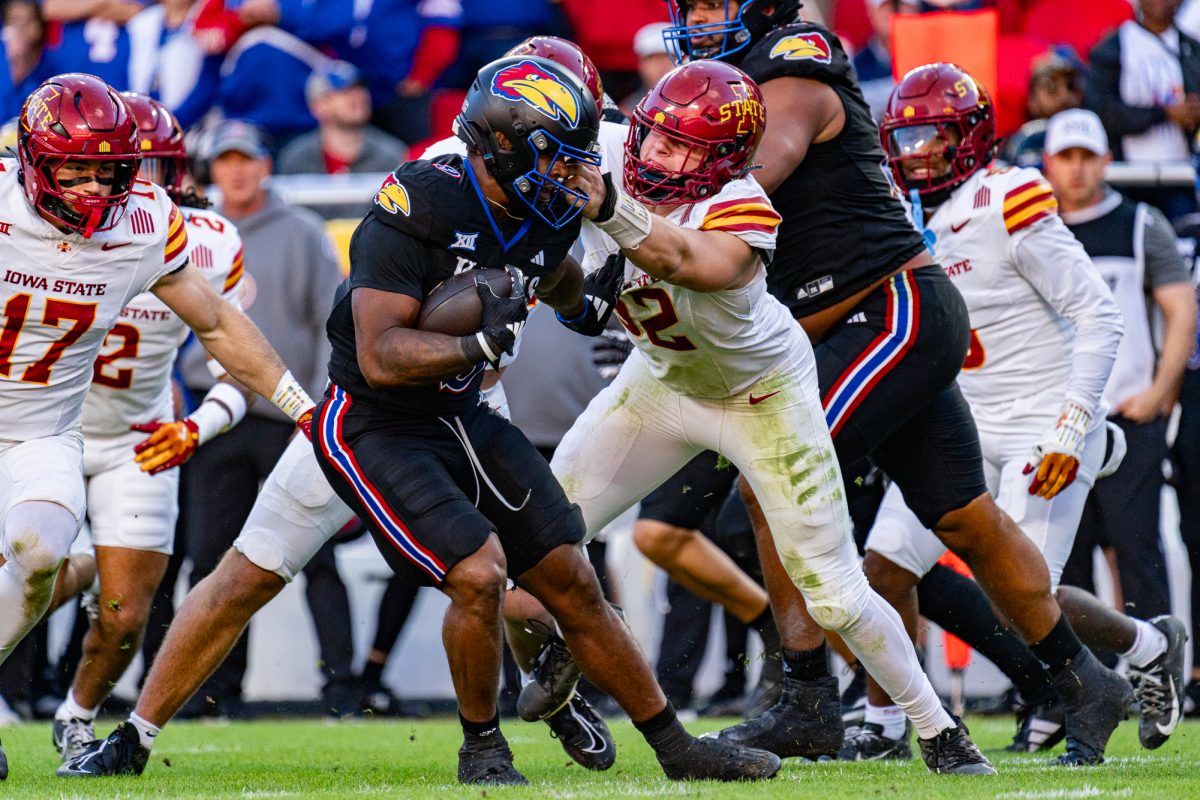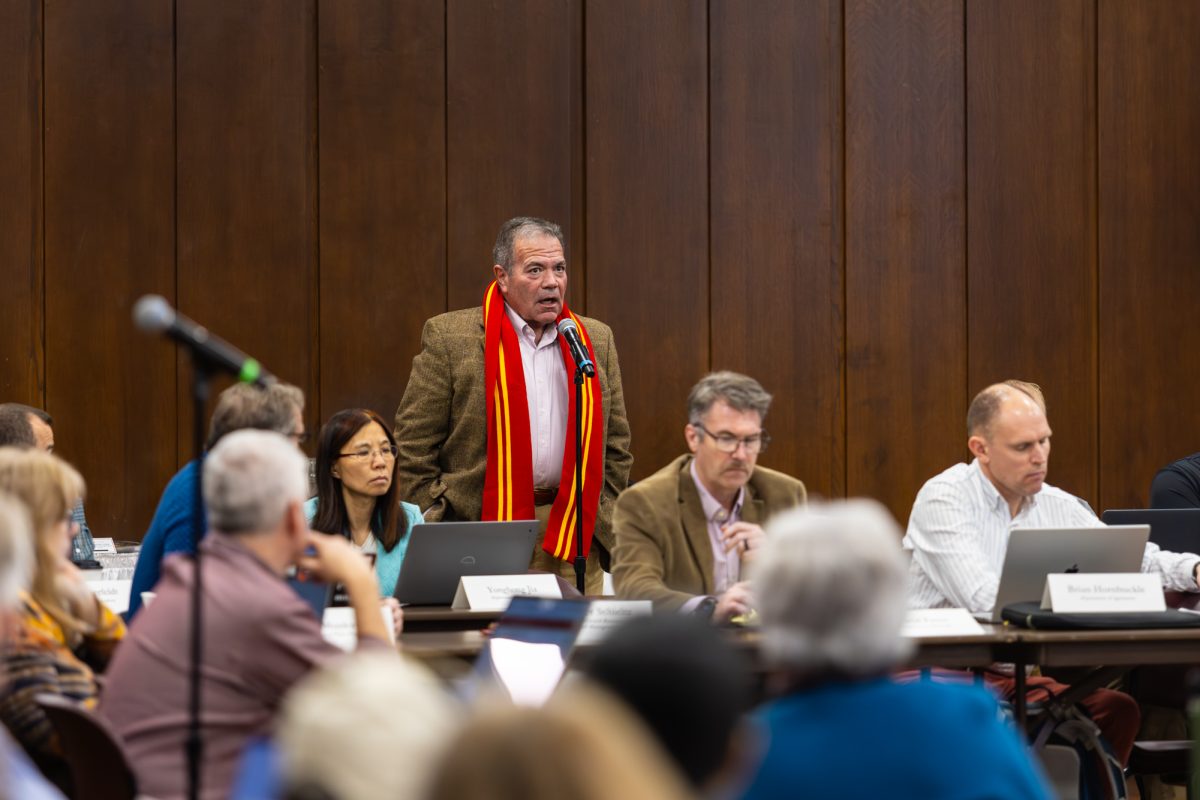Loving your work is an art
September 15, 1996
Carol Prusa, adjunct associate professor of art, chose a profession she believed would challenge her throughout her entire life. She chose to be a painter.
“Painting is very difficult,” Prusa said. “I’m essentially creating a form. I’m making order out of a very chaotic existence and giving meaning that makes sense to me.”
“I make exactly what I want to see,” Prusa said. “I love my work. You’re not supposed to say that, because it’s not humble. It never does what I exactly want, however, which makes me go on to make more stuff.”
Prusa’s paintings are based on natural forms, the body and body senses. These forms are combined with religious iconography and techniques. “I think of them as being spiritual, not religious or didactic. I think that my work is life-affirming in a very private way,” Prusa said.
“I also think my work is very formal,” Prusa said. “If people can’t appreciate it on a level of the content or meaning, I think they can appreciate it on a formal level because it’s well crafted, it’s well composed, and there’s an interesting use of material.”
Prusa values the historic and archival methods used by Byzantine artists in painting the religious icons that inspire her work. “I have this love of obsessive meticulous methods,” Prusa said.
She makes most of her paints from dry pigments that she orders from Germany. She also grinds some of the pigments herself, such as coal (black) and azurite (blue).
Prusa mixes these pigments with egg yolk to make egg tempera, and with beeswax to make encaustic (an ancient wax-based method of painting). These are “…historic pigments used traditionally,” Prusa said.
Iowa’s summer heat and high humidity cause her some problems with these traditional materials. “I have to air condition my paintings or they won’t dry and will turn moldy,” Prusa said. “And if you forget about your egg, it can stink.”
Prusa said that originally these materials have been rarely used. “A lot of students, I think because they’ve seen me using egg tempera and encaustic over the years, have taken them up, getting focus grants, and working in those mediums now,” Prusa said.
Prusa’s life as an artist, however, holds much more than painting. She is involved in making performance art with dancer Valerie Williams of the dance troupe Co-Motion. She is also working in clay and woodworking with the assistance of associate professor Ingrid Lilligren and temporary associate professor Deb Scott respectively.
And besides all of this, Prusa has been a teacher at Iowa State for the past ten years.
“I love to teach,” Prusa said. “Teaching challenges me to keep up with the students, and it gives me a credibility and a standing in society, a place. I am a teacher, and that feels nice. If I’m valued as a teacher, there is less pressure on me to be valued as an artist, so I have a great deal of freedom in my own work because I know I’m a good teacher.”
“I think I would also like to do some administrative work, because I have some strong ideas about how things should be done,” Prusa said.
“I would like the College of Design to become much more interdisciplinary,” she said. “The studio setups (should be) modernized so that electronic equipment, computers and video become a natural part of our flow and not an issue at all.
“ISU is a technology-based institution; Art and Design should take advantage of that,” Prusa said. She would like more cooperation between the College of Engineering and the College of Design. Prusa would like to see a day when the College of Design would get the College of Engineering’s second-hand equipment.
“In Black Engineering students are working on these major terminals; big, big screens built for visualization…and they’re just plugging in equations because they’re on the older equipment,” Prusa said. “But that older version is better than anything in the College of Design.”
Prusa regrets the lack of funding for the arts. “Though the sciences are having a harder time getting funding, it doesn’t come close to art. For an individual artist to get a grant for $2,000 is big. You have to get $50,000 in engineering to be big,” Prusa said.
“The university is supposed to be the vision for the future, and should protect and support and vitalize the growth of ideas. Therefore, it should be the biggest supporter of the arts possible,” she said.
“I think if I were the administration,” Prusa said, “I would really push hard to make people understand that being an artist provides a way of thinking through issues, not just making paintings, but gives a way of thinking that is unique and is a strong asset to other ways of thinking.”
“I always thought I could be president of the university, because basically that’s an art,” Prusa said. “Jischke is molding the university according to his vision, so he is creating a new form. That’s his art.”
Prusa will have shows in Austin Peay State University at Clarksville, Tenn., this fall; in the Bloomington Art Center, Bloomington, Minn., next spring; and in the Matrix Gallery, Sacramento, Calif., next summer.
“I’m really excited about the Matrix because it’s a feminist gallery…with a strong history of being a really vibrant gallery,” she said.
Three of Prusa’s large encaustic paintings are now on display at the Randall-Story Bank, 606 Broad St., Story City. The installation is entitled, “Water, Air and Fire.”
A recent press release stated that the Octagon Center for the Arts works with the Roland-Story State Bank to select artists and coordinate these exhibits. This collaboration gives selected artists the opportunity to have their works on display as a one-person exhibit for the public to enjoy.
The exhibit is free and open to the public from 9 a.m. until 3 p.m. on weekdays, and until 6 p.m. on Fridays through the month of September.






